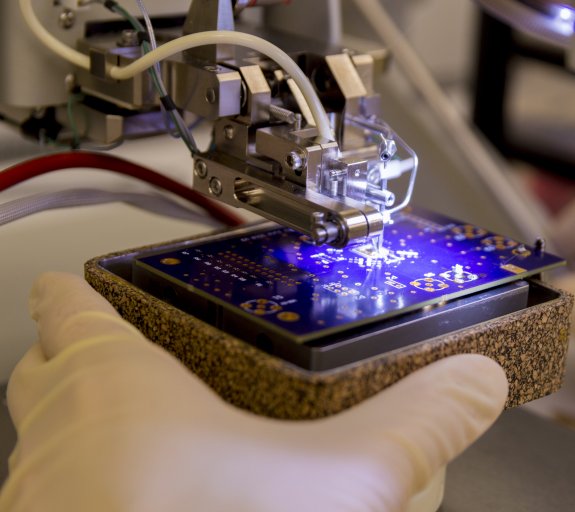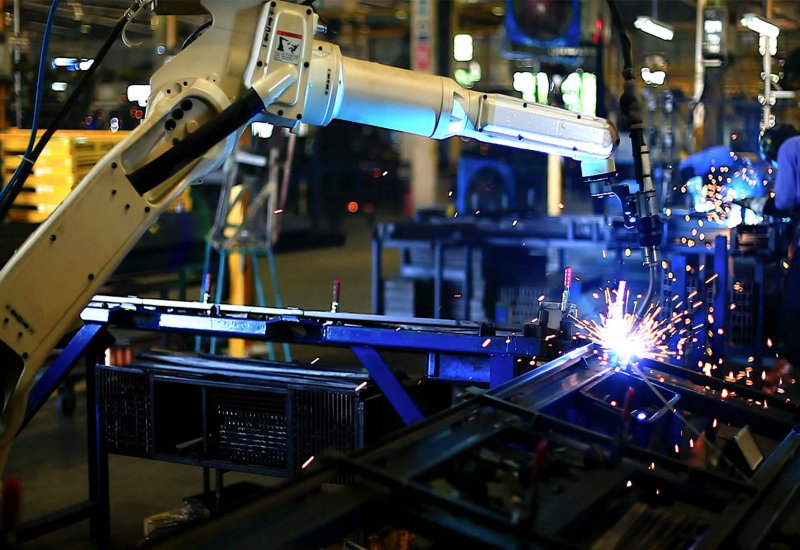
Why despite a global shortage, we expect continued growth in the semiconductor sector
A shortage of semiconductors is causing supply chain issues across the globe – but while there could be short-term disruption for some end-users, we believe that stronger demand and continued innovation remain beneficial for the chip manufacturing industry and its investors.
Over the past few months, a lack of supply has caused problems for companies ranging from car manufacturers to consumer electronics companies. Volvo and Jaguar Land Rover for example warned they have had to suspend production until supply issues are resolved, while tech companies including Apple have also felt the impact.
The reason for this shortage is primarily – but not only – the coronavirus pandemic. Global lockdowns, the shuttering of factories, cancellation of orders, and restrictions on transportation hampered semiconductor production and shipping in 2020.
At the same time, there was a surge in demand for many items that use semiconductors – such as home entertainment systems and domestic appliances – as consumers purchased new products or upgraded existing devices while stuck at home. Some households experienced a drop in income due to furlough or unemployment, but others saved money by not spending on commuting and leisure – meaning more cash to spend on things like games consoles and smartphones. The stimulus cheques sent to individuals in the US as part of the government stimulus programme also drove spending on consumer electronics1.
As vaccines are rolled out and economies reopen, demand for bigger ticket items such as cars has also recovered2, exacerbating the shortage.
Demand should support earnings growth
Aside from the pandemic, other factors have contributed to the supply chain issue. Winter storms in the US this year hit Texas – home to several leading semiconductor manufacturers – causing manufacturing plants to be closed to conserve power on the grid for heating homes3. And a fire at a Japanese factory operated by Renesas – one of the largest suppliers of semiconductors to the automotive industry – led the company to warn it may not be able to fulfil orders4.
Semiconductor manufacturers have ramped up production where possible to try to keep up with the increased demand – but the chips take time to produce, and capacity cannot simply be added overnight. It typically takes more than three months to build a semiconductor, via a complex process in highly sophisticated factories5, so manufacturers need to anticipate demand, which was difficult during the pandemic.
These factors combined to create a global shortage of semiconductors – albeit one that we expect to be temporary, with the supply/demand balance starting to normalise as the year progresses and potentially into 2022.
One interesting consideration for investors as a result of the shortage is the potential that producers can exert some pricing power. This could help support earnings growth for these businesses. They may also take the opportunity to increase capacity. Taiwan Semiconductor Manufacturing Company, for instance, recently raised its revenue growth targets for the year and said it would invest more in production capacity on the back of surging demand6.
Long-term structural trends are driving growth
The recent stronger demand has prompted us to add to some of our positions in semiconductor companies. The shortage is more of a short-term issue, but we believe the long-term structural trends driving growth in the semiconductor sector remain.
Worldwide semiconductor revenue rose to $466.2bn in 2020, a 10.4% increase on the year before, according to research group Gartner7. Meanwhile the Semiconductor Industry Association said global sales of the chips rose 17.8% in the first quarter of this year compared to the same period the year before8.
Increased digitalisation has gone hand-in-hand with developments in semiconductor technology over the past few years, meaning additional markets for these chips have opened up.
The continued development of new smartphone handsets and software remains a powerful driver for demand, but the pandemic has also accelerated certain trends which are seen as beneficial to the semiconductor industry, for example growing usage of data centres, the Internet of Things and the digitalisation of industry.
As well as buying home entertainment devices in lockdown, many consumers purchased new devices to enable them to work more easily from home. With a new hybrid way of working set to be the ‘new normal’ for many employees, this will create additional ongoing demand for semiconductors.
At the same time, the need for social distancing has sharpened interest in the Industrial Internet of Things, where semiconductors are used in machines to communicate, process and analyse data, for instance in factories or warehouses, where the ability to safely meet increased long-term demand is at a premium.
Artificial intelligence used in sectors from industrials to healthcare has also come into renewed focus during the pandemic. This was already a growing trend pre-pandemic and one that we expect to continue. Semiconductor maker Nvidia is one example of a company with a wide range of end markets in this area – from data centres to industrials, to video gaming to autonomous vehicles.
While fully autonomous vehicles are still some way off, the technology is constantly developing. In the near term, net-zero targets from governments around the world are speeding up the transition to electric vehicles. These use semiconductors for a variety of purposes, from batteries to emergency braking systems.
Semiconductors play a central role
We believe we are still in a relatively early stage for opportunities in the semiconductor industry. We expect growth in these areas and others to continue. The well-documented global shortage of semiconductors has served as a reminder of how essential these chips are in our daily lives. And more and more, businesses and consumers are becoming ‘connected’, adopting new processes and devices that provide solutions for a myriad of issues, ranging from entertainment to shopping to the energy transition.
We expect this to continue, with the 2020s being a decade of unprecedented innovation – in which semiconductors will play a central role.
- https://www.marketwatch.com/story/americans-spent-their-stimulus-checks-on-discretionary-goods-such-as-bikes-video-games-and-clothes-target-and-walmart-ceos-say-2020-05-20
- https://agmetalminer.com/2021/05/05/automotive-mmi-us-auto-sales-robust-in-april/
- https://www.wsj.com/articles/texas-winter-storm-strikes-chip-makers-compounding-supply-woes-11613588617
- https://www.bbc.co.uk/news/technology-56486242
- https://www.bloomberg.com/graphics/2021-chip-production-why-hard-to-make-semiconductors/?sf245662545=1
- https://www.wsj.com/articles/tsmc-sets-up-for-soaring-chip-demand-11618486965
- https://www.gartner.com/en/newsroom/press-releases/2020-04-12-gartner-says-worldwide-semiconductor-revenue-grew-10-4-percent-in-2020
- https://www.semiconductors.org/q1-global-semiconductor-sales-increase-3-6-over-previous-quarter/
All stock/company examples are for explanatory/illustrative purposes only. They should not be viewed as investment advice or a recommendation from AXA IM

Automation
Investing in automation and robotics - How are companies capitalising on robotics – and what does this mean for investors?
Find out moreDisclaimer
This document is for informational purposes only and does not constitute investment research or financial analysis relating to transactions in financial instruments as per MIF Directive (2014/65/EU), nor does it constitute on the part of AXA Investment Managers or its affiliated companies an offer to buy or sell any investments, products or services, and should not be considered as solicitation or investment, legal or tax advice, a recommendation for an investment strategy or a personalized recommendation to buy or sell securities.
Due to its simplification, this document is partial and opinions, estimates and forecasts herein are subjective and subject to change without notice. There is no guarantee forecasts made will come to pass. Data, figures, declarations, analysis, predictions and other information in this document is provided based on our state of knowledge at the time of creation of this document. Whilst every care is taken, no representation or warranty (including liability towards third parties), express or implied, is made as to the accuracy, reliability or completeness of the information contained herein. Reliance upon information in this material is at the sole discretion of the recipient. This material does not contain sufficient information to support an investment decision.